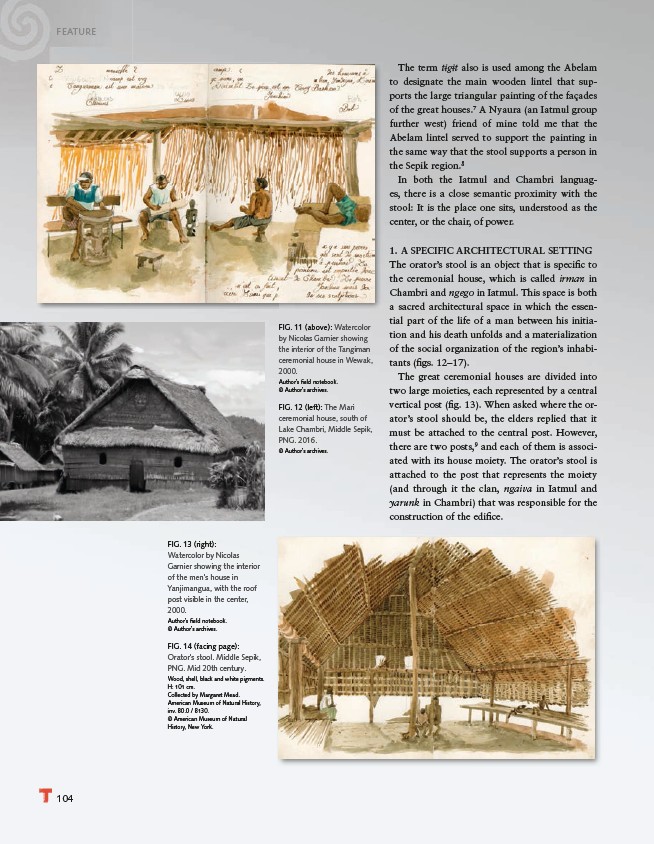
104
The term tɨgɨt also is used among the Abelam
to designate the main wooden lintel that supports
the large triangular painting of the façades
of the great houses.7 A Nyaura (an Iatmul group
further west) friend of mine told me that the
Abelam lintel served to support the painting in
the same way that the stool supports a person in
the Sepik region.8
In both the Iatmul and Chambri languages,
there is a close semantic proximity with the
stool: It is the place one sits, understood as the
center, or the chair, of power.
1. A SPECIFIC ARCHITECTURAL SETTING
The orator’s stool is an object that is specifi c to
the ceremonial house, which is called irman in
Chambri and ngego in Iatmul. This space is both
a sacred architectural space in which the essential
part of the life of a man between his initiation
and his death unfolds and a materialization
of the social organization of the region’s inhabitants
(fi gs. 12–17).
The great ceremonial houses are divided into
two large moieties, each represented by a central
vertical post (fi g. 13). When asked where the orator’s
stool should be, the elders replied that it
must be attached to the central post. However,
there are two posts,9 and each of them is associated
with its house moiety. The orator’s stool is
attached to the post that represents the moiety
(and through it the clan, ngaiva in Iatmul and
yarunk in Chambri) that was responsible for the
construction of the edifi ce.
FIG. 11 (above): Watercolor
by Nicolas Garnier showing
the interior of the Tangiman
ceremonial house in Wewak,
2000.
Author’s fi eld notebook.
© Author’s archives.
FIG. 12 (left): The Mari
ceremonial house, south of
Lake Chambri, Middle Sepik,
PNG. 2016.
© Author’s archives.
FIG. 13 (right):
Watercolor by Nicolas
Garnier showing the interior
of the men’s house in
Yanjimangua, with the roof
post visible in the center,
2000.
Author’s fi eld notebook.
© Author’s archives.
FIG. 14 (facing page):
Orator’s stool. Middle Sepik,
PNG. Mid 20th century.
Wood, shell, black and white pigments.
H: 101 cm.
Collected by Margaret Mead.
American Museum of Natural History,
inv. 80.0 / 8130.
© American Museum of Natural
History, New York.
FEATURE